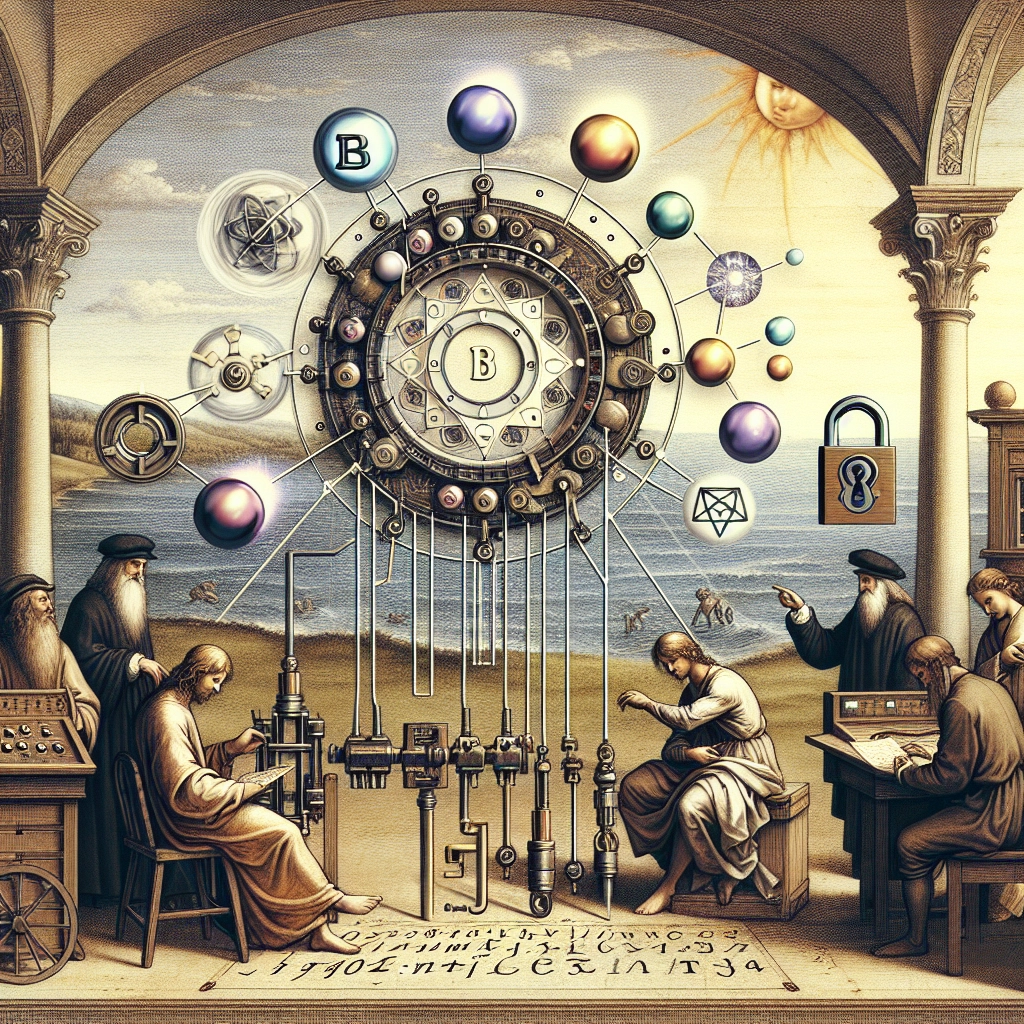
- Published on
- Authors

- Name
- ric de yuga 😄
Quantum Key Distribution - BBM92
🌌 Introduction: BBM92 Quantum Key Distribution
Quantum Key Distribution (QKD) has indeed revolutionized secure communication. The BBM92 protocol, introduced in 1992 by Charles Bennett, Gilles Brassard, and N. David Mermin, is a significant advancement in this field. It leverages quantum mechanics and entanglement to ensure cryptographic key exchange security.
✨ Understanding the BBM92 Protocol
The BBM92 protocol is an entanglement-based QKD protocol that uses pairs of entangled photons to establish a secure key between two parties, typically called Alice and Bob. Unlike its predecessor, the BB84 protocol, BBM92 utilizes entangled photon properties and Bell's inequality for security.
🌀 Entanglement and Bell States
In BBM92, entangled photon pairs are created in a maximally entangled Bell state. These states are defined as:
These states exhibit perfect correlations, meaning measurements on one photon instantly determine the other's state, regardless of distance.
🔍 The BBM92 Protocol: Step-by-Step
1. Entangled Photon Generation
The protocol begins with generating entangled photon pairs in a Bell state, typically using spontaneous parametric down-conversion (SPDC). One photon from each pair is sent to Alice and the other to Bob via a quantum channel.
2. Basis Selection and Measurement
Alice and Bob randomly choose a measurement basis for each received photon:
- Rectilinear basis:
(0°) and
(90°)
- Diagonal basis:
and
They measure each photon's polarization in their chosen basis and record results.
3. Classical Communication and Sifting
After measuring many photons, Alice and Bob publicly announce their chosen bases over a classical channel. They discard results where bases don't match, keeping instances with the same basis. This process is called "sifting."
4. Error Checking and Bell's Inequality Test
To ensure key security, Alice and Bob compare a random subset of their results to estimate the error rate. They also perform a Bell's inequality test to verify photon entanglement and detect potential eavesdropping. An eavesdropper (Eve) attempting to intercept photons would introduce errors, violating Bell's inequality.
5. Key Generation and Postprocessing
If the error rate is below a certain threshold (typically around 11%, not 20% as originally stated), Alice and Bob generate the final key. They use classical postprocessing techniques like error correction and privacy amplification to eliminate any information Eve might have gained and reconcile remaining key discrepancies.
🛡️ Security Advantages of BBM92
BBM92 offers several security advantages:
- Intrinsic Security: Rooted in fundamental quantum mechanics properties.
- Eavesdropping Detection: Any interception disturbs the entangled state, detectable through Bell's inequality violation.
- No Need for Trusted Source: Unlike prepare-and-measure protocols, BBM92 doesn't require trust in the quantum state preparation source.
🌐 Practical Implementations and Challenges
🔬 Photon Generation and Detection
BBM92 implementation requires reliable entangled photon sources and efficient single-photon detectors. SPDC in nonlinear crystals (e.g., BBO) is commonly used for entangled photon generation.
🌌 Quantum Channel Loss
Photon loss in the quantum channel can reduce protocol efficiency and security. Quantum repeaters are being developed to mitigate this issue, though they're still in early research stages.
📊 Environmental Noise
External noise can affect entangled state fidelity and introduce measurement errors. Proper isolation and advanced error-correction techniques are essential for maintaining key distribution integrity.
🔮 Conclusion: The Future of Secure Communication
The BBM92 protocol represents a significant advancement in quantum cryptography. By leveraging quantum entanglement and Bell's inequality, it provides a robust and fundamentally secure method for generating encryption keys. As quantum technologies evolve, protocols like BBM92 will be crucial in ensuring secure communication in the quantum era.
📜 References
- Bennett, C. H., Brassard, G., & Mermin, N. D. (1992). Quantum cryptography without Bell's theorem. Physical Review Letters, 68(5), 557-559.
- Ekert, A. K. (1991). Quantum cryptography based on Bell's theorem. Physical Review Letters, 67(6), 661-663.
- Gisin, N., Ribordy, G., Tittel, W., & Zbinden, H. (2002). Quantum Cryptography. Reviews of Modern Physics, 74(1), 145-195.
- Nielsen, M. A., & Chuang, I. L. (2010). Quantum Computation and Quantum Information. Cambridge University Press.
- Lo, H. K., Curty, M., & Tamaki, K. (2014). Secure quantum key distribution. Nature Photonics, 8(8), 595-604.
Understanding the principles behind the BBM92 protocol illuminates quantum mechanics' profound impact on future secure communication methods.
